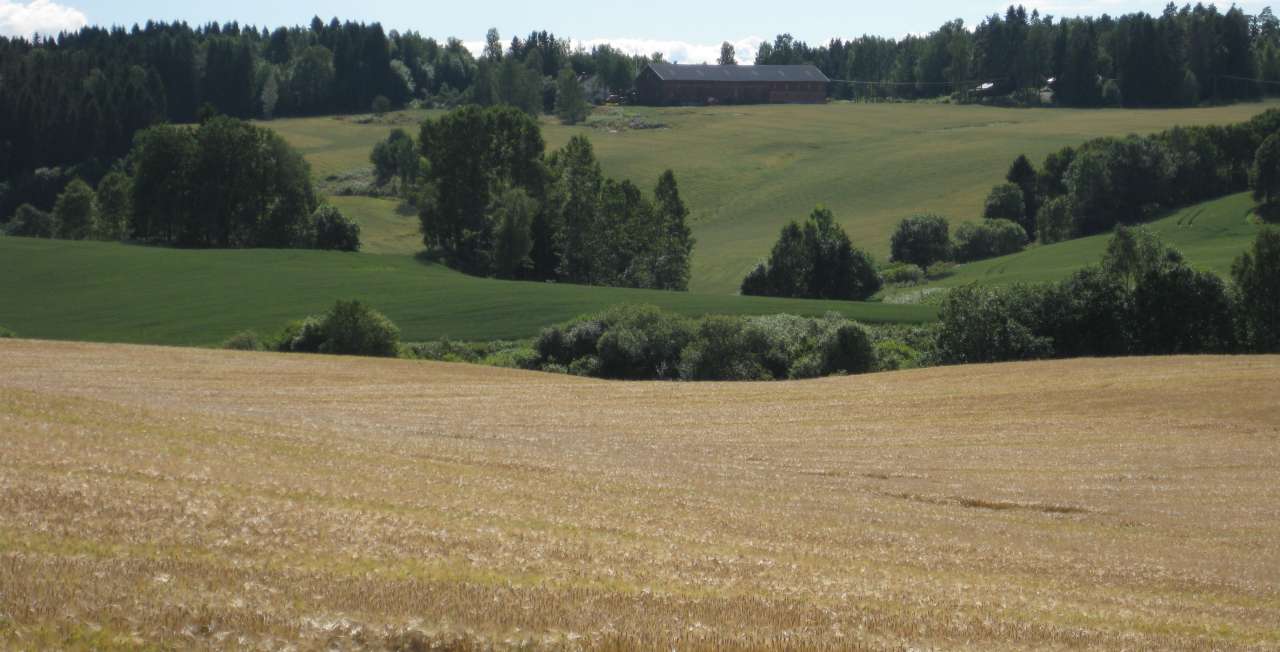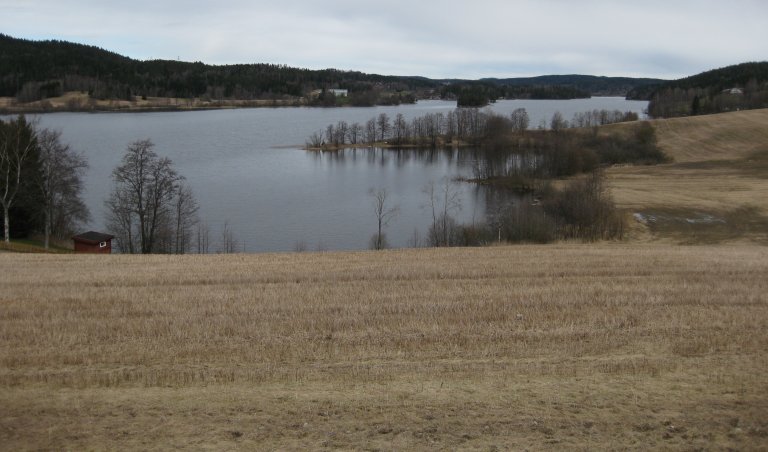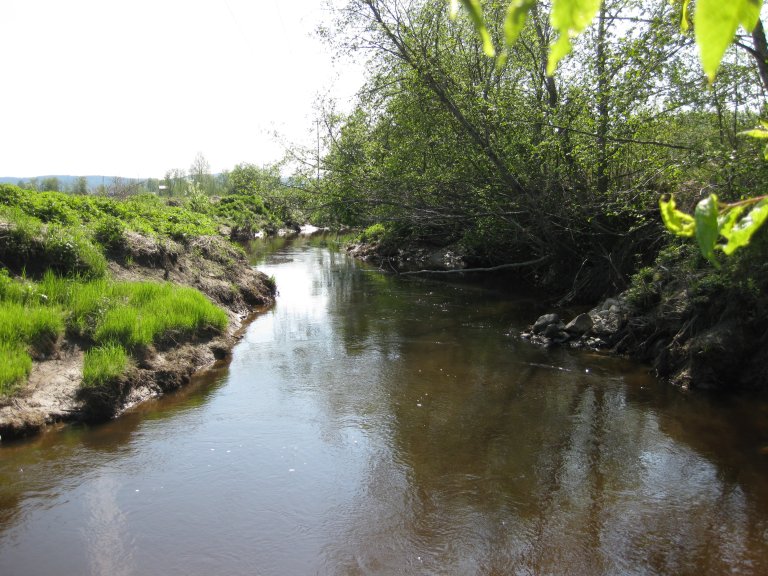Areas with grain crops

Photo: Eva Skarbøvik
Below is an overview of the recommendations of measures to reduce agricultural pollution from areas dominated by grain crops.
A variety of measures is needed to achieve the desired reduction in particle and nutrient runoff from areas with grain production. In most cases a combination of several measures will be required to achieve an adequate reduction.
Usually, the most prioritised measure is to reduce erosion, i.e. detachment and transport of particles from agricultural land to surface waters. Such measures include reduced tillage and grass-covered waterways. Reduced tillage involves no or minimum tillage with harrowing, as well as spring ploughing instead of autumn ploughing. Grass covered waterways in depressions in the fields where there is surface water is recommended, but not widely adopted.
Other relevant measures include vegetation zones and sedimentation ponds. These are in most cases recommended as a supplement to the above-mentioned erosion prevention measures.
In addition, it is in many cases necessary to control and repair existing hydrotechnical installations (manholes and drainage ditches) to reduce the direct transport of particles and nutrients through these systems and into rivers.
Fertilizer planning is also highly relevant. By adapting the fertilizer application to the individual crop needs and by avoiding excess fertilization, the soil content of nutrients will also be reduced and
consequently the risk of loss of nutrients to waterways.
Which measures to prioritize will depend on the local conditions. Several factors affect runoff and the dominant transport processes in a catchment area, and conditions that must be considered in each case include:
- Topography
- Soil type
- Farming practices and intensity
- Proximity to waterways
- Phosphorus levels in soil


